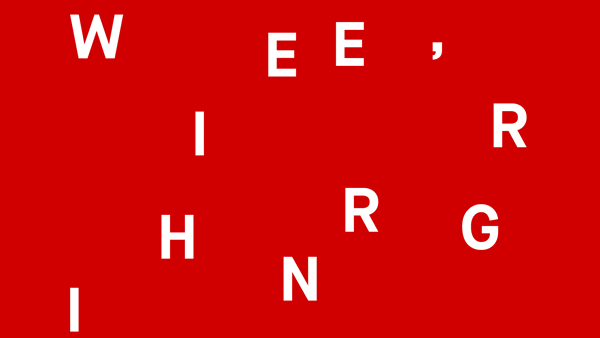I wanted to share my two final papers from last semester, as both approach projects and issuses of the documentary arts. All comments very welcome!
The subject of the first paper was inspired directly by the presentation of Jonathan Mitchell in The Documentary Bodega Audio Series http://constec.com.ar/?p=12363 (thanks UD & Jonathan!). This essay explores Walter Ruttmann’s 1930 experimental radio documetnary Weekend Order . In particular, as I write, my aim here is to develop an analysis of online Weekend Order in the context of the discourse of documentary arts, sensorial experience, and urban representation. While groundbreaking on many fronts, I am most interested in Ruttmann’s attempt to represent the urban experience in a purely sonic form through documentary recordings. For as Fran Tonkiss writes, “The modern city, for all that there is to see, is not only spectacular: it is sonic.” It is precisely this interplay between the visual and the aural in the context of urban space and its representation through montage that makes Ruttmann’s work so compelling. While my analysis focuses on Ruttmann’s Weekend, I also travel through the work and theory of other avant-garde critics and artists of the time, especially Rudolf Arnheim, Dziga Vertov, Alfred Döblin, and Walter Benjamin. Recent research into the role of the senses in experiencing place conducted in geography and neuroscience helps further develop the framework for my theoretical arguments. Cultural geographer Gerald Pocock writes, “[Sound] is dynamic: something is happening for sound to exist. It is therefore temporal, continually and perhaps unpredictably coming and going, but it is also powerful, for it signifies existence, generates a sense of life, and is a special sensory key to interiority.” It is the auditory faculty’s unique “key to interiority” that can be developed through temporary blindness that grounds my final argument about the new subjectivity suggested by Ruttmann’s Weekend Buy online .
You can read listen to the piece and read the whole paper online or download a PDF.
The second paper examines a project that has long been a major inspiration, ABCDF:The Graphic Dictionary of Mexico City, a project produced in 2001 that encompasses a 1502 page book, an interactive CD-Rom and a public museum exhibition. Theoretically, I draw most heavily upon Giuliana Bruno’s expansion of the cinematic field in her discussions of Aby Warburg’s Cheap Mnemosyne-Atlas and Gerhard Richter’s Atlas; George Landow’s writings about hypertext and hypermedia; Umberto Eco’s ideas of performance and openness; and Michel de Certeau’s exploration of the relationship between language and the city. I have chosen ABCDF specifically because I believe it illustrates a unique approach to representing the city that re-invents the dictionary, not as a vehicle for establishing a pretense of total knowledge, but instead as an “open work” that is “performed” through an embodied and active spectatorial subjectivity enacted through walking in the city. Produced on the cusp of the widespread adoption of the Internet and virtual geographic software such as Google Earth, ABCDF crystallizes the potential of hypermedia, not simply to interconnect multiple media objects, but to reveal the hypertextual nature of our physical environments and stimulate a subjectivity sensitive to our place within them.
You can read the whole paper online or download a PDF.







